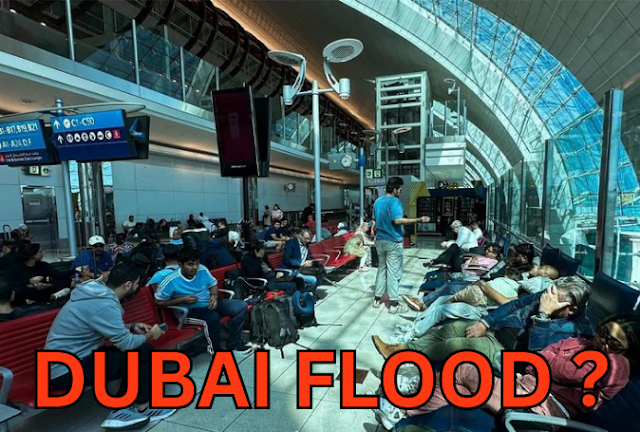The Emirate of Dubai, known for its towering skyscrapers and futuristic infrastructure, recently faced an unexpected natural calamity – heavy rainfall that brought the city to a standstill. This weather event not only disrupted the daily lives of residents but also raised questions about the underlying causes behind the sudden downpour.
On Tuesday, the United Arab Emirates (UAE) and its surrounding desert regions experienced a deluge of rain, leaving the streets of Dubai inundated with water. The Dubai International Airport was forced to shut down, and vehicles were stranded on the city's highways, submerged in the rising waters. Even shopping malls and metro stations were not spared, as the floodwaters seeped into these public spaces.
According to the UAE's state news agency, WAM, this rainfall event was the highest recorded in the country since 1949, surpassing the previous record-breaking downpours. Experts have attributed this unusual weather pattern to the UAE's ongoing experiments with cloud seeding technology.
Cloud seeding is a process designed to artificially induce rainfall by dispersing specific substances, such as silver iodide or potassium iodide, into the atmosphere. The UAE, located in one of the world's hottest and driest regions, has been at the forefront of implementing this technology to address the growing demands for water resources driven by its expanding population and economy.
The country began its cloud seeding operations in 2002, with the aim of enhancing precipitation during specific weather patterns when the likelihood of additional rainfall is highest. In the recent case, it is believed that aircraft were deployed to seed the clouds, leading to the unprecedented downpour that overwhelmed Dubai's infrastructure.
While cloud seeding has been touted as a solution to water scarcity, the recent events in Dubai have highlighted the potential risks and unintended consequences of this technology. The WAM report confirmed that the aircraft were actively seeding the clouds for two consecutive days, conducting a total of seven flights to maximize rainfall.
As the authorities grapple with the aftermath of the flooding, questions arise about the long-term implications of cloud seeding on the regional climate and the need for a more nuanced and controlled approach to weather modification. Striking the right balance between addressing water scarcity and mitigating the potential risks of such interventions will be a key challenge for policymakers and meteorologists in the UAE going forward.
The heavy rainfall in Dubai has served as a stark reminder that while technological solutions can offer promising avenues, they must be implemented with a deep understanding of the complex interactions between human activities and natural systems. As the UAE continues to explore cloud seeding and other innovative approaches to water management, it will be crucial to prioritize rigorous research, risk assessment, and sustainable practices to ensure the resilience and well-being of its communities.

